Shell of the Week: The Smith’s Nutmeg
Axelella smithii reaches 17 mm (about 0.7 inches). The shell is relatively thick and the shell sculpture includes about 8–10 raised...
Axelella smithii reaches 17 mm (about 0.7 inches). The shell is relatively thick and the shell sculpture includes about 8–10 raised...
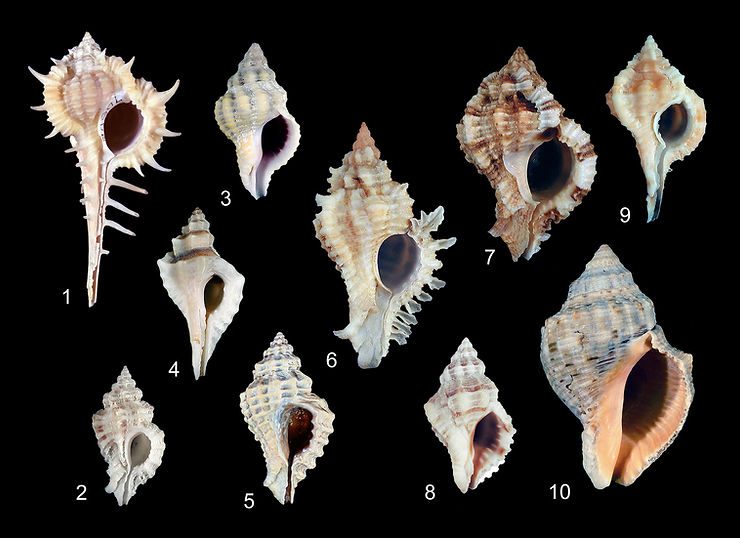
This is the first of a series depicting some of the most biodiverse families of marine mollusks from Sanibel and Captiva islands. Here are ten relatively common shallow-water species of drills and murex snails in the family Muricidae. (More species are present in deeper water offshore.) Click on the species name to see their entries in our Southwest Florida Shells guide. They are: (1) Cabrit’s Murex (Vokesimurex cabritii); (2) Pitted Murex (Favartia cellulosa); (3) Mauve-Mouth Drill (Calotrophon
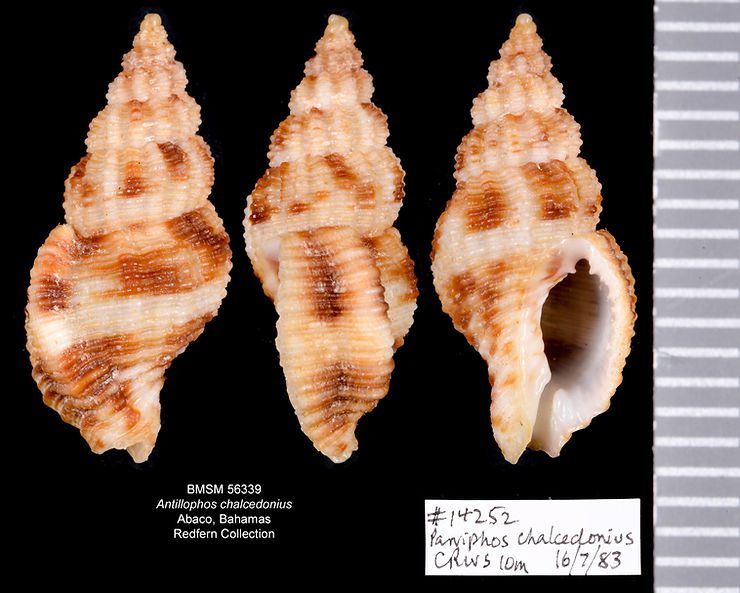
Antillophos chalcedonius is a relatively small (reaching 17 mm, or about 0.67 inch) gastropod, that displays a shell sculpture of strong spiral (“revolving”) threads and well-spaced axial (“vertical”) ridges. The color pattern shows variations of a white background and brownish patches that are more-or-less aligned with the axial ridges. The species is found throughout the eastern Gulf of Mexico, Florida Keys, Bahamas, and the Caribbean Basin southward to Colombia. Antillophos chalcedonius was d
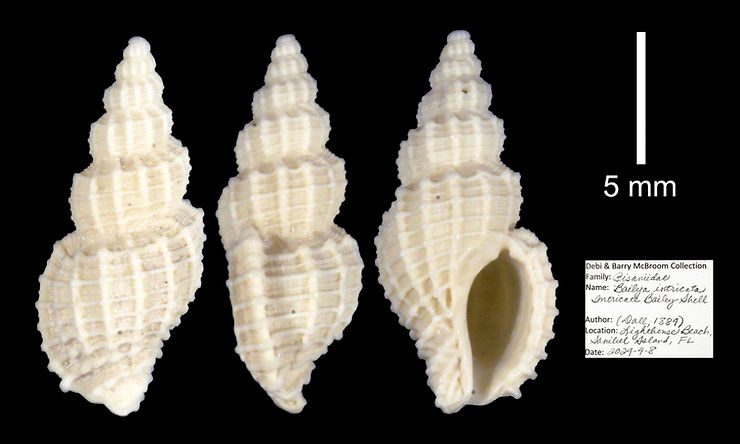
Bailya intricata is a small but attractive gastropod that reaches only 18 mm (about 0.7 inch). Its shell sculpture presents 14–36 axial (“vertical”) ribs crossed by spiral lines, with beads forming at the intersections. The shell color is an even cream-yellowish- to light-brown. The species is found off Florida, Gulf of Mexico, and the Caribbean Sea. This species may be difficult to distinguish from the Small Phos (Bailya parva), a species with similar geographic distribution; this latter, howev
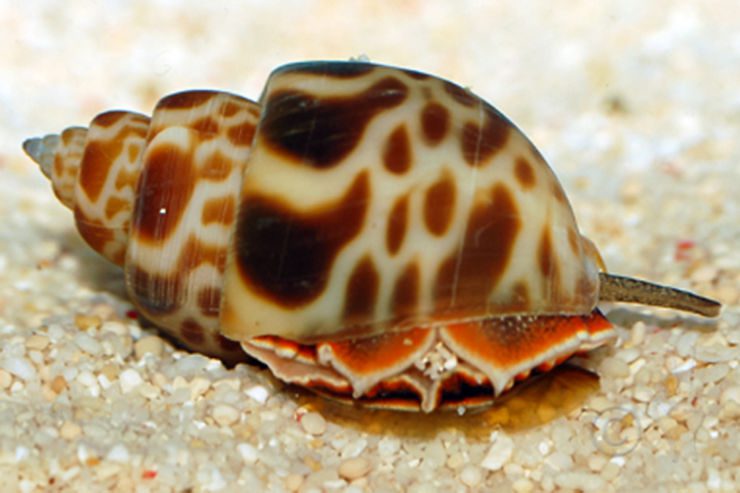
Gastropod species of the genus Babylonia, the babylon snails, are common in the southwest Pacific and parts of the Indian Ocean. They are predatory snails with shells measuring between one to two inches in size, and marked by large, well-defined brown spots. Some of the species are popular in the marine aquarium trade in many parts of the world.They are also a food staple in parts of Southeast Asia. Most likely following from their use as food, their shells are sold by the bushel in the Internet
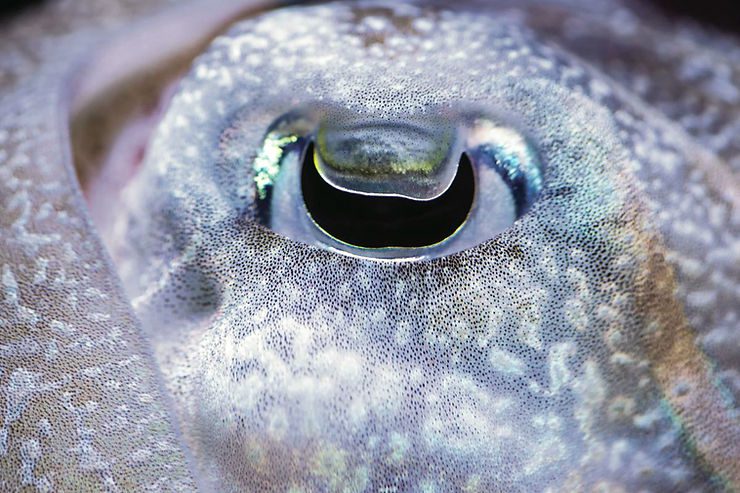
[I published this blog piece originally on June 25, 2021. Since then, it became the most read item in the “Curator’s Corner.” Here it is again, for your enjoyment.]The wavy, or w-shaped cuttlefish eye has been recently in the news, as scientists keep researching the unique features and properties of cephalopod eyes. Cuttlefish eyes can perform functions that are similar to those in vertebrates, such as the refined three-dimensional vision that allows them to accurately estimate distance and spee
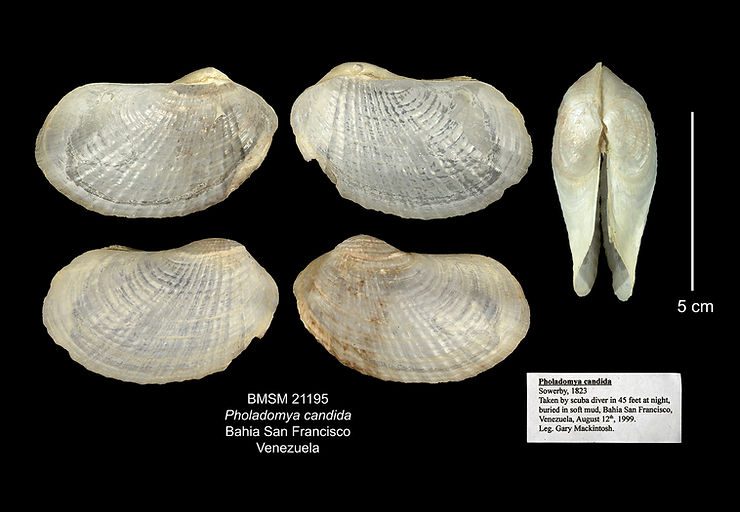
Pholadomya candida is a very rare bivalve that is more closely related to fossil species than to most living clams. Shells of the species have been collected in a few localities of the Caribbean Sea. The species was first reported alive in the 1800s, then only again in the early 2000s when it was found off the coast of Colombia and communicated in The Nautilus by Juan Manuel Díaz and colleagues. We have only one complete specimen in the Museum collection, collected in 1999 off the coast of Venez

Colubraria testacea is a marine snail that grows to about 50 mm (about 2 inches). Colubraria species are found in tropical shallow seas and are known to feed (usually at night) on blood from reef fish, in particular parrot fishes of the family Scaridae. The western Atlantic Obscure Dwarf Triton is found from eastern Florida south to the Caribbean and the coast of eastern Brazil and, as the vernacular name suggests, resembles a small triton shell.#colubrariatestacea #obscuredwarftriton #colubrari

Cassis madagascariensis is one of the largest species of mollusks living in the shallow, clean waters of the tropical western Atlantic Ocean, including Florida and the Gulf of Mexico. This spectacular mollusk, which can reach more than 40 cm (about 16 inches) in length, is a member of the family Cassidae of helmet and bonnet snails.As shown in the photo above, helmet snails feed on sea urchins and sea biscuits such as the Long-spined Sea Biscuit (Plagiobrissus grandis). During feeding, Queen Hel
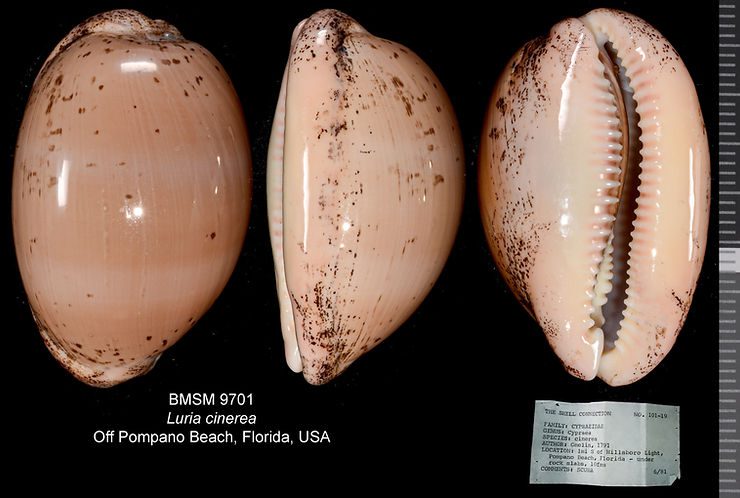
The Atlantic Gray Cowrie (Luria cinerea) is a relatively common species of Cowrie inhabiting shallow coral reef areas in the tropical western Atlantic. The species is not found, however, on the coast of Southwest Florida. As happens with most species from the cowrie family (Cypraeidae), the Atlantic Gray Cowrie bears planktonic larvae. Their offspring drift in the sea until metamorphosis to their adult, bottom-crawling lives.The larval shell is very distinctive from the adult one in this and oth